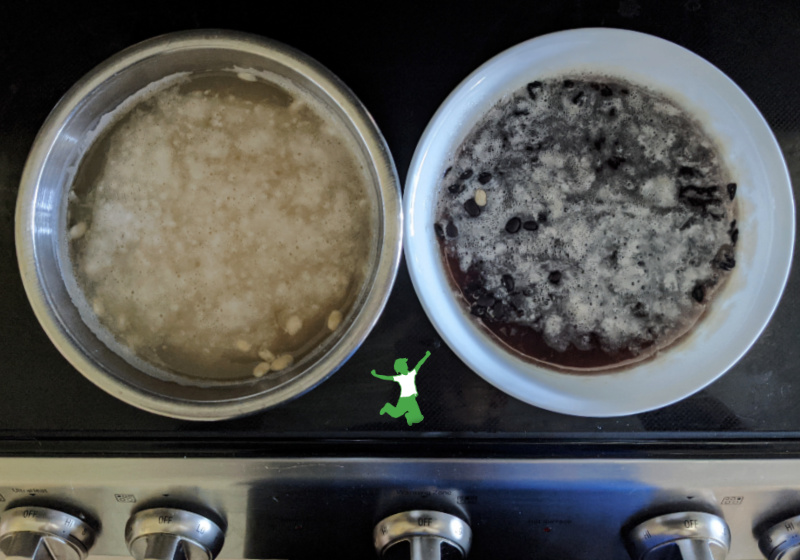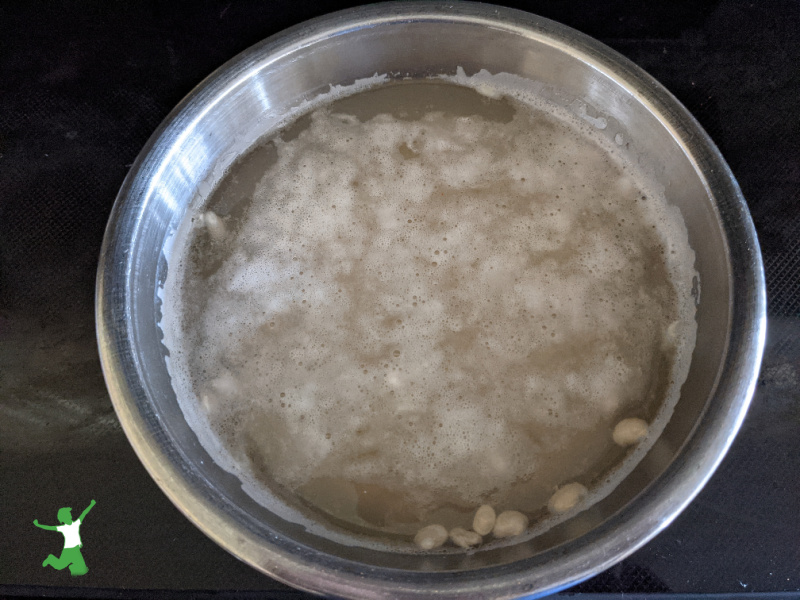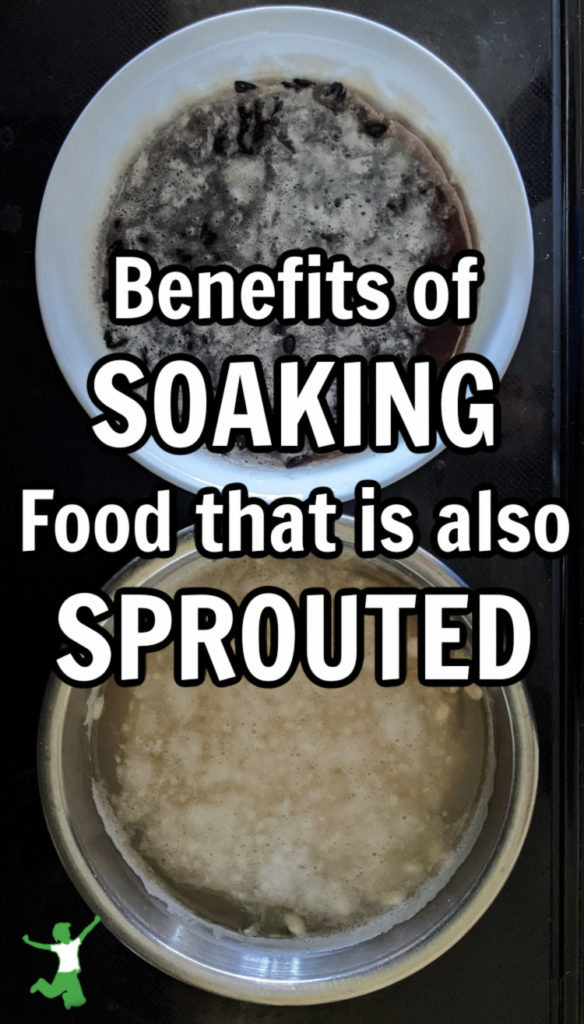Examination of the health benefits of sprouting and then soaking legumes, beans, grains, seeds, and nuts beyond sprouting or soaking alone.

For many years, I’ve written and filmed video blogs about the importance and proper techniques of using one of three ancestral approaches for preparation of grains, legumes, nuts, and seeds.
These methods are:
- Soaking
- Sprouting
- Sour Leavening (Sourdough)
A research-based comparison of soaking, sprouting, and sourdough is explored in the linked article.
One Method is Usually Sufficient
For the vast majority of people, using one of these methods is sufficient to reduce anti-nutrients in these difficult-to-digest plant foods so that the resulting dish is as easily assimilated as possible.
Which method to choose?
That is up to you based on the recipe you are using and the desired texture/taste you are shooting for.
For example, you can make a loaf of homemade bread either by soaking the flour, sprouting the grains, and then grinding into flour, or using a sourdough starter that you mix with fresh flour.
For sweet breads, soaking the flour overnight before baking is best in my opinion because soaked loaves are quite soft in texture.
Sprouted or sourdough slices work very well for sandwiches and toast.
For homemade tortilla chips, croutons, and the like, I currently prefer to use sourdough (although I have used the sprouted method in the past!).
What About Using More than One Method?
What about using more than one method for preparation of legumes, grains, and nuts?
Are there any additional digestive benefits to taking this extra step and the additional time required?
As it turns out, there definitely are, at least anecdotally in my own family.
Please don’t get me wrong, though.
I DO NOT want anyone to take this suggestion as any sort of pressure!
If you are using sprouted flour only to make your baked goods or soaking unsprouted nuts and seeds, that is FANTASTIC!
I only bring up this topic as food for thought (literally) for those who have extra sensitive digestion and perhaps are willing to go the extra mile to make dishes even more simple for the gastrointestinal tract to deal with.
Sprouting AND Soaking?
I first started asking myself if sprouting and then also soaking would, in fact, be even more digestible than using either method alone a few years ago.
In particular, I noticed that sprouted and soaked nuts and nut butter (this is the brand I buy) were more tolerated by my husband, who has extra sensitive digestion.
I personally did not notice any difference and neither did my kids. But, he very much did!
So, I started making my homemade chili and legume-based soups using sprouted AND soaked legumes.
These are a few of the recipes I’ve specifically tried using this technique:
- GAPS Legal Chili (uses low starch navy beans)
- Split Pea Soup
- Curried Lentil Soup
- Homemade Pepitas
- Macadamia Pudding
Sensitive Stomachs Notice the Difference
The more easily assimilated digestive experience of sprouted and soaked beans, nuts, and seeds was consistently significant enough for him that I’ve continued with this approach ever since.
He definitely notices if I make my keto chili using soaked only navy beans, for example! He’s sure to tell me about it too 🙂
Notice the picture above of sprouted black beans that still produce quite a bit of foam when soaked. The picture below is of sprouted navy beans that have soaked overnight. This foam contains antinutrients and saponins.
If you soaked either of these in unsprouted form, the foam would be double or even triple this amount. The picture in this article on soaking beans shows you the enormous amount that is produced!
So, sprouting definitely reduces most of the antinutrients. However, soaking removes even more!
The visual observation of the reduced amount of foam as each method is implemented is very powerful confirmation of the benefits, in my opinion.

My Preferred Method
What I suggest for the most speedy approach is to buy sprouted legumes and grains in whole form.
Then, soak them overnight before draining, rinsing, and cooking in fresh filtered water.
Here are the details on the how-to with recipes/videos:
You can also take the time to sprout yourself (here is my basic sprouting recipe and video how-to).
Note that sprouting yourself before soaking takes quite a bit of time.
However, sprouting yourself is definitely more budget-friendly. So if you have the time to do it, I encourage you to do so.
For me, the amount of time saved by buying already sprouted nuts, seeds, and legumes is worth it.
Sprouting AND Sourdough?
So, we’ve established that there is anecdotal evidence that sprouting and soaking together make for a more pleasant and nutritious digestive experience for those with sensitive stomachs.
What about bread and other baked goods that use sprouted flour that is also fermented into sourdough?
For this, I cannot provide any anecdotal evidence as my husband does not eat grains, and thus cannot provide insight.
However, for those of you who do eat grains and have sensitive stomachs, I recommend this family-owned bakery that makes bread, tortillas, rolls, and buns made with sprouted flour that is also fermented into sourdough.
I do buy their sprouted and sourdough cinnamon swirl bread to make French toast and sourdough French toast casserole.
However, my kids prefer the basic Rustic sourdough for sandwiches and toast. This particular loaf is not made with sprouted flour. However, the bakery does offer a spelt loaf that is both sprouted and sourdough.
I am interested to know if those of you who have tried both have noticed any difference or if you personally take the time to ferment sprouted flour for your homemade baked goods. Please share your experience in the comments if you can!








I soak my oats overnight with almond milk, which gets absorbed. Should I be soaking the oats in enough water so that foam forms and I can scoop it out instead?
You really should soak in water with a small amount of acidic medium. Soaking in almond milk doesn’t do much, unfortunately especially if it is toxic commercial almond milk. https://www.thehealthyhomeeconomist.com/video-how-to-cook-oatmeal-the-right-way/
I’ve noticed a huge difference when I eat sprouted then soaked oatmeal. I used to just soak regular oats over night and then cook them up. I’d always have major digestive distress about five hours later. I recently started using sprouted oats and then I soak them overnight and cook them in the morning. I have zero digestive problems. I’m so pleased!!!
Hey Cristina, which brand of sprouted oatmeal have you tried? Just curious. Thank you!